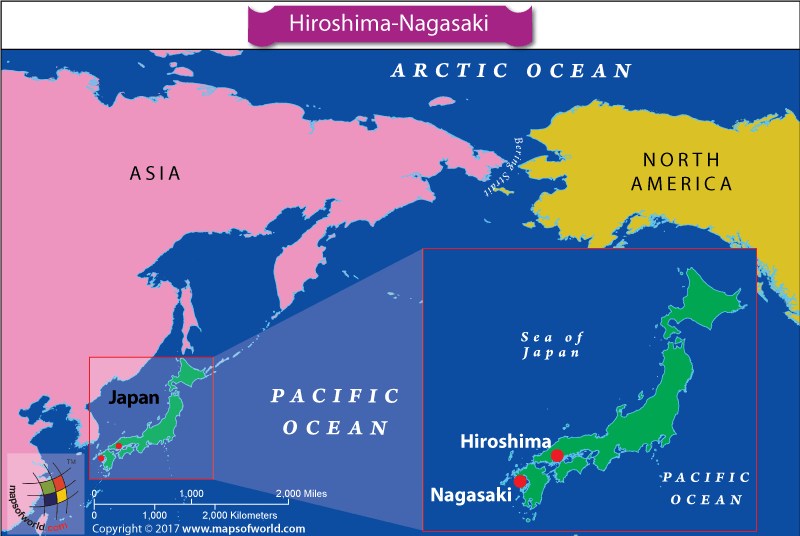Why were Hiroshima & Nagasaki selected as target for Atomic Bombing?

On August 6, 1945, the United States of America dropped the atomic bomb on the bustling Japanese town of Hiroshima. Three days later another, more powerful atomic bomb was dropped on Nagasaki. These remain the most powerful weapons ever used in warfare till now. Causing untold destruction and over 129,000 deaths, this is the only time nuclear weapons were used in war. The choice of targets – Hiroshima and Nagasaki – came after careful consideration. Records indicate that the fact that both cities were important industrial and urban centers over 3 miles in diameter and had hitherto been unaffected by the American air raids may have sealed their fate. These criteria made it easier for the US to gauge the full impact of the nuclear weapons.
By May 10, 1945, Germany had surrendered to the Allies, ending World War II in the European theater. Japan, however, continued fighting. It looked like the war in Asia would cost the Americans and Allies in general many more lives and at least a few more months. Within a few weeks USSR was also set to join the Allies and this is something that the USA wanted to avoid. In the meanwhile the Manhattan Project – US efforts to harness nuclear power to come up with an atomic bomb – had reported success in the testing phase. What was now needed was a live target to gauge the full extent of damage that could be wrecked by the bomb.
The General George Marshall, the Chief of Staff of the United States Army, asked Major General Leslie R. Groves Jr.to put together a Target Committee which would come up with a list of possible Japanese targets on which the atomic bombs could be dropped. The committee was made up of a number of senior military personnel and scientists. They gauged the impact of the bombs and found a number of places which would be best suited to force Japan to surrender and to study the full impact of the bombs. Hiroshima came up on top of the list. Not only was it a large, well-populated urban center, it was also an important military installation. Cities such as Tokyo, Yawata, and Yokohama were not considered since they had already suffered damage due to allied bombing and the exact damage caused by the nuclear bombs would become difficult to gauge. Kyoto, Japan’s ancient capital, Kokura, and Niigata were also on the list – Nagasaki was not.
Groves greatly favored bombing Kyoto along with Hiroshima. It is believed that Henry L. Stimson, the US Secretary of War at the time, who was a great admirer of Japanese culture and had honeymooned in Kyoto many years ago, did not favor bombing Kyoto. He asked Kyoto, a city full of cultural monuments, to be removed from the list. Nagasaki replaced it. Finally, the clarity and lack of cloud cover atop Hiroshima and Nagasaki, on the days the bombs were dropped, decided the fate of these two cities.
There have been many debates regarding the necessity of the second bomb. Wouldn’t the “Little Boy” (atomic bomb which was dropped on Hiroshima) have been enough? There are no clear answers to this question but we are certain that the US wanted to demonstrate the full might of its nuclear arsenal and bring Japan to its knees.
Related Maps:




